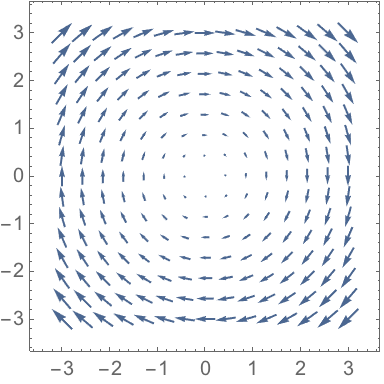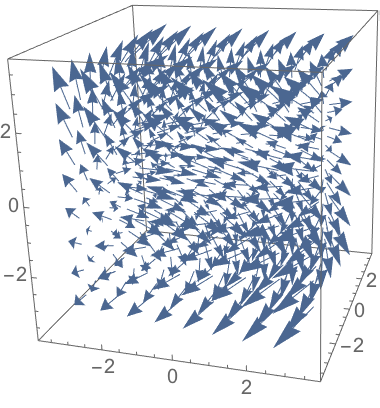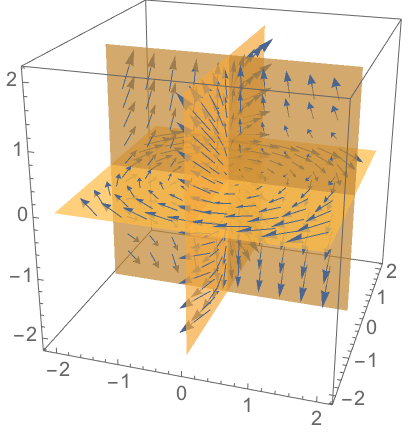Analyse vectorielle et visualisation
En Wolfram Language, les vecteurs de dimensions n sont représentés par les listes de longueur n.
Calcule le produit scalaire de deux vecteurs :
| Out[1]= |  |
Tape ÉCHAPcrossÉCHAP pour obtenir le symbole du produit en croix :
| Out[2]= |  |
Calcule la norme d'un vecteur :
Trouve la projection d'un vecteur sur l'axe des ordonnées :
Trouve l'angle entre deux vecteurs :
Calcule le gradient d'un vecteur :
(Pour obtenir le symbole ∇, utilise ÉCHAPgradÉCHAP).
| Out[1]= |  |
Calcule la divergence ou la courbe d'un champ vectoriel :
| Out[2]= |  |



